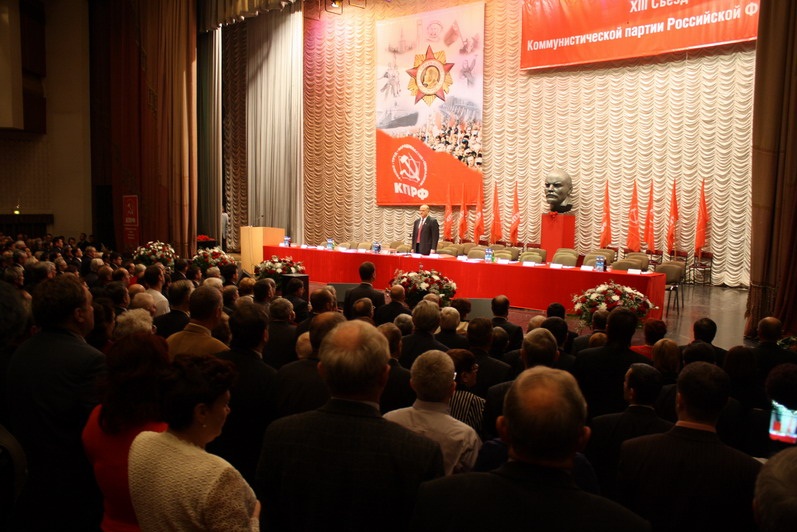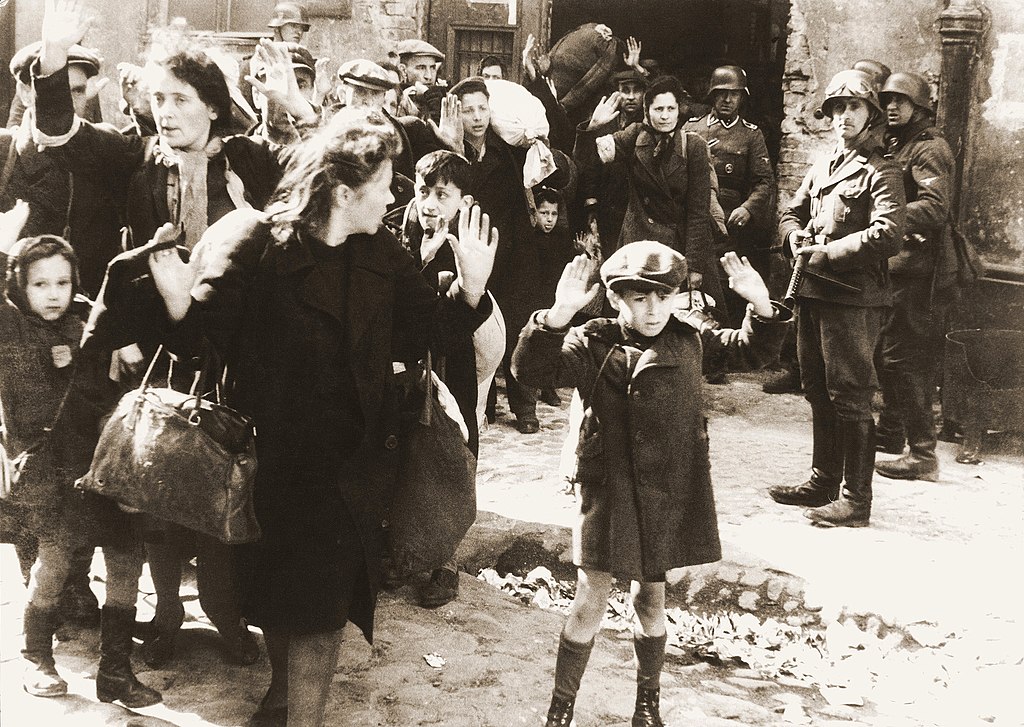The Nature and Future of Communism (Part 1)

Human drive for equality will always be with us. Communism is one of its most rabid manifestations. Therefore its promise will endure, albeit in ever-changing forms. Let us look at the definition, ideology, typology, practice, and phases of Communism.
Marek Jan Chodakiewicz
What is Communism? Firstly, it is an ideology derived from Gnosticism. Gnosis is secret knowledge allegedly possessed by the chosen few who aim to herd the unenlightened human chattel to paradise through a revolution. Communism promised an earthly paradise. Marx was a classic Gnostic for he believed that he had a teleological key to the mystery of past, present, and future which would lead to the secular utopia.
Against whom and what is Communism? It is against faith, tradition, freedom, family, patriotism, and, last but not least, private property. It stands against everything that cannot be leveled and controlled.
By what means does Communism operate? By any dialectical means necessary to reach the revolutionary goal. According to needs, the Communists form a “popular front” of all the leftists; they co-opt nationalism, creating “national liberation movements”; or they embrace the exclusionist party line of eliminating everyone, including their own faithful comrades, as “enemies of the people.” Thus Lenin, Luxemburg, Mao, Gramsci, or Guzman shared identical aims, while employing disparate tactics.
It is worth stressing that this dialectical nimbleness creates a great deal of confusion among the outside observers. Thus some believe today that North Korea is not a Communist state, but a nationalist one because it has embraced a xenophobic and autarkic policy of juche. Others claim that Pol Pot was a racist because he exterminated national minorities, the very same ones who had been overrepresented among the Khmer Rouge before the seizure of power. Still others hope that Castro apparently distances himself from Communism because, although he used to imprison homosexuals in concentration camps, the comandante has recently permitted a gay pride parade to take place in Cuba.
Because of such dialectical contortions of the Communist tactics, one still hears the following, silly liberal saw: if the Communists no longer collectivize through terror-famine, then the system is no longer Communism. If the Communists no longer mass-execute their victims, then it is no longer Communism. If the Communists no longer believe in their ideology, then it is no longer Communism. However, when the Communists suspend their atrocities, it is not because they have abandoned Marxism but because they have decided that their grip on power is firm; the society is forced close enough to socialism for their purpose at the current stage; the traditional institutions and elites are neutralized (mostly liquidated) and, thus, incapable of offering meaningful resistance; and the population is traumatized sufficiently enough by the memories of earlier horrors to behave submissively. Simply, there is no need for mass terror.
Further, even a faithless Communist has at his disposal an ideology which remains a powerfully effective theory and practice of exercising and maintaining power. One needs no faith to dominate the people. One needs ruthlessness and new institutions originating in a totalitarian ideology. But ruthlessness need not manifest itself in perpetual terror. Its mere specter suffices. It is not a different system. It still remains Communism, simply one of its avatars. The conservatives understand this very well. They are perfectly capable of differentiating various manifestations of Communism, including the “liberal” ones as during the rule of Brezhnev and Gorbachev (as well as certain “liberal” phases of Lenin and Stalin’s domination). The conservatives remember, however, that even at its apparently most benign Communism always maintains its totalitarian potential. Thus the system remains Communism, and does not cease to be one as the liberals would like it to.
Within this context, we can name the following phases of Communism. The first is Communism on the way to power; then Communism in power; and, finally, Communism after the loss of power. The phases are dynamic and cyclical.
Communism marching to power manifests itself in two ways. Both aim at the victory of the revolution, but they differ tactically. The first way is to work apparently within the system, even in a parliamentary manner. Thus, evolution leads to revolution. Austro-Marxism before 1914 and Eurocommunism of the 1970s come to mind here. The second way is to conduct open revolutionary activities by the vanguard party under charismatic leadership fostering anarchy and terror to radicalize the population through provoking the government to counterterrorist measures. Recent examples are the Lightning Path in Peru, the New People’s Army in the Philippines, and the Maoist insurgencies in India and Nepal. Nota bene, in India the Communist rebels operate in about 240 out of its 625 administrative districts. At least in Indian state, the Maoists carry on their revolutionary acts against the Stalinists, who are currently in power due to their parliamentary victory.
In its next phase, Communism in power wields either total power or shares it within a government coalition. In the latter case Communism fluctuates within a legal democratic framework between parliamentary coalition and opposition. At times, however, the road to a coalition can lead through a revolution. This is the case with Nepal. The Maoists conducted a bloody revolutionary struggle, which resulted in a compromise. Once the Maoists won democratic elections, they abolished monarchy and dominated a leftist coalition government. However, the army remained strongly royalist and nationalist and refused to yield to “civilian control,” which was a dialectical rouse to take it over. The army’s resistance triggered a parliamentary crisis and the Maoists left the coalition government, which now is headed by the Stalinists.
Yet in most instances of Communism in power we deal with a monoparty regime. China, Vietnam, Cuba, Laos, and North Korea are the most classic examples. China and Vietnam have been undergoing their New Economic Policy (NEP) phase, where economic “liberalism” is coupled with soft totalitarianism where state terror occasionally surfaces (e.g., the Tianamen Square massacre). Meanwhile, Cuba, Laos, and North Korea reflect Communism at the stage of hard totalitarianism. North Korea is the most egregious offender here. But even it has experienced quite a bit of change since the mid-1990s. The great famine brought about by harvest failure and Communist mismanagement served as a catalyst. It created a great deal of internal and external displacement. Refugees and smugglers crossed into China as border control became less stringent on both sides. The smugglers have brought back, among other wares, cell phones and other electronic equipment as well as DVDs and video cassettes. This breached the Communist party’s monopoly on internal communications and undermined censorship. Further, some of the refugees make it to the free world, where a few become involved in anti-Communist propaganda activities over the radio waves and, to a much lesser extent, via other, high tech gear. Yet, there are still concentration camps and police terror in North Korea.
These changes illustrate transformation – and not disappearance — of Communist totalitarianism. To transform means to change a material or a phenomenon without altering its basic nature. This concerns both “parliamentary” and revolutionary Communism. Under certain conditions they can pass to the next phase: Communism after the loss of power, or post-Communism. Post-Communist entities are perhaps best classified according to their geographic location.
Let us consider an interesting example of Communist parties in Western Europe, who have never enjoyed power (except for post-war episodes in France, where the Communists briefly joined a coalition government, and in Luxembourg, where the Communists uniquely won a parliamentary election, an unprecedented feat in the history of the world which went unmatched until the “transformations” of the 1990s). At the moment, we can classify Western European Communist parties as post-Communist (or, as having suffered the loss of power) in a sense that to a large extent they were the creations, extensions, and avatars of the ruling Communist party in the Soviet Union. Because of the implosion of the mother party, they lost power, too. Now, stripped of their mighty foreign sponsorship and, thus, shadows of their former selves, they have continued to operate within the framework of democracy as coalition or opposition. And thus, for example, the Italian Stalinists became a “moderate” party of the “democratic left,” while the French Trostkites – not dependent of Moscow since the late 1920s – bank on radicalism within the parliamentary system.
It is perhaps easier to conceptualize post-Communism outside of Western Europe because in the imperial Soviet sphere the Communist party and the state were identical. The post-Soviet sphere can now be divided into several portions. The first portion of the post-Soviet sphere consists of Central Europe’s former Warsaw Pact nations and post-Yugoslavia. Their post-Communists oscillate between opposition and coalition in politics. Nominally, the post-Communists adhere to parliamentary democracy, but they dominate in economy and mass culture (riding with gusto the wave of liberal moral relativism) which allows them to manipulate the system to their advantage.
(…)
We thank prof. Marek Jan Chodakiewicz for sharing this article.



